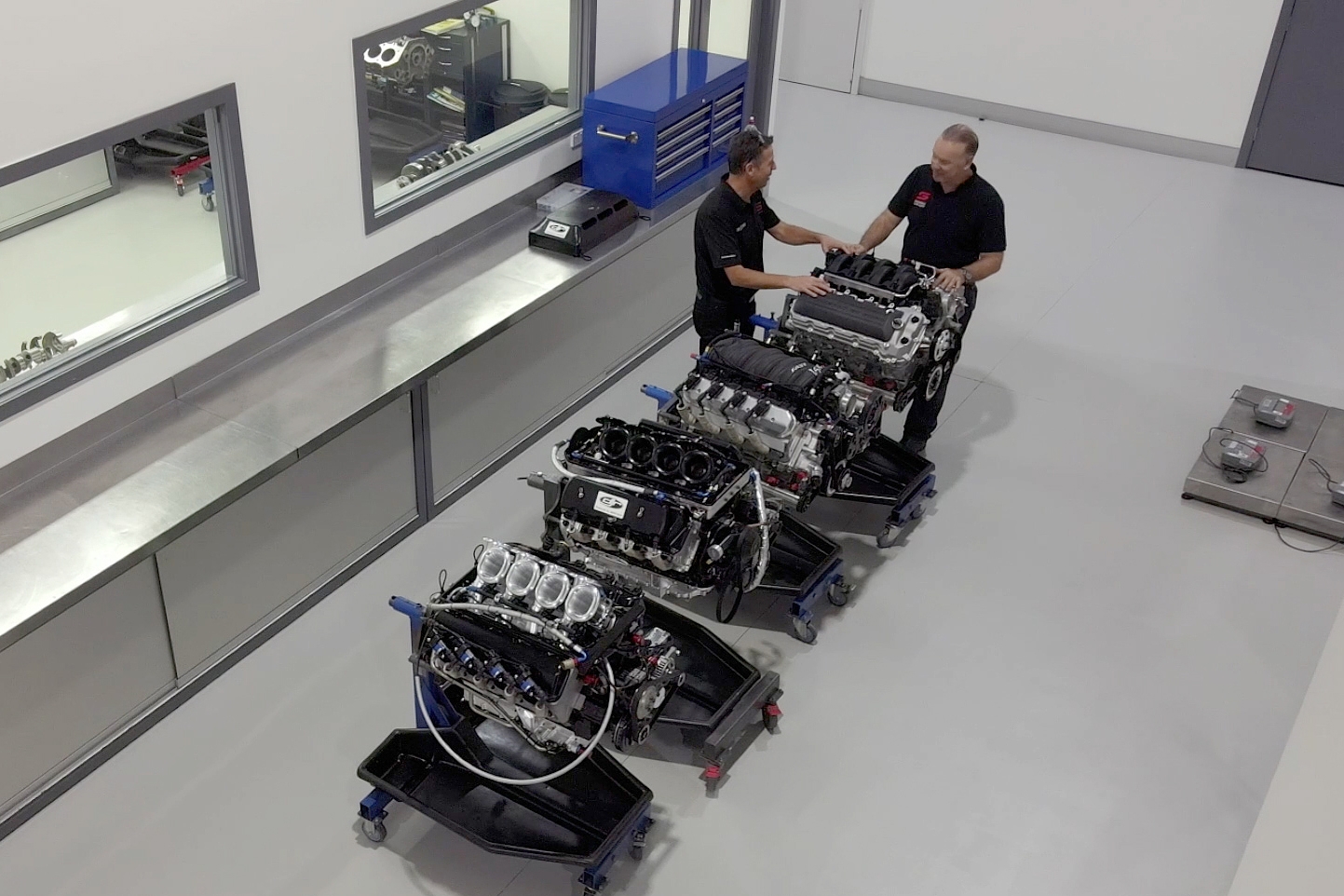Managing the key differences of the two Gen3 engines
The latest episode of the Gen3 Unpacked series has detailed why the General Motors and Ford Gen3 engines have different capacities.
GM and Ford Gen3-specification engines have been the key talking point of the new Mark Larkham-hosted series.
After nearly 30 years of 5.0 litre V8 engines, the introduction of the Gen3 ruleset will see a change in engine capacity.
The GM Gen3 engine is a single camshaft engine with two valves per cylinder.
Ford’s Gen3 engine will have four camshafts with four valves per cylinder.
In order to paritise the two units, the GM engine capacity will be 5.7 litres, with Ford’s 5.4.
“People are probably wondering why one’s a 5.7 and why the Ford’s 5.4,” engine expert Craig Hasted said.
“You’ve got to remember they’re two completely different architecture engines.
“To get the constraints that we require, which is the power and the economy, they needed to be different capacity to achieve that.”
Gen3 engine testing has advanced in recent weeks; notably, Triple Eight Race Engineering has tested the GM Gen3 engine prototype in its engine development car at Queensland Raceway.
Craig Lowndes told Supercars.com that, after three days of testing, the GM engine prototype had reaped “fantastic” results.
It marked another key milestone in engine development with an eye on prolonging the life of the power plant versus the current engines.
“We had a meeting with the engine builders to discuss why their engines are rebuilt so frequently,” Hasted added.
“We’re stressing the [current] engines.
"So one of the reasons to increase the capacity is to try and destress the engine and improve the mileage.”
The successful testing of Gen3-spec engines, armed with more relevance to road cars, accompanies the strong results of aerodynamic testing.
Not only will the cars look more like their road-going counterparts, but they’ll feature more road car DNA under the bonnet, too.
“These [Gen3] engines have got far more OE parts in them than we’ve come from,” category head of motorsport Adrian Burgess said.
“From pure racing-built, no [road car] DNA, all bespoke parts… that’s expensive.
“This has got more of the manufacturer DNA in it. This is more what’s in your road car.
“Both manufacturers are really engaged. They’re wanting more of their DNA, more of their OE parts in the engines."







